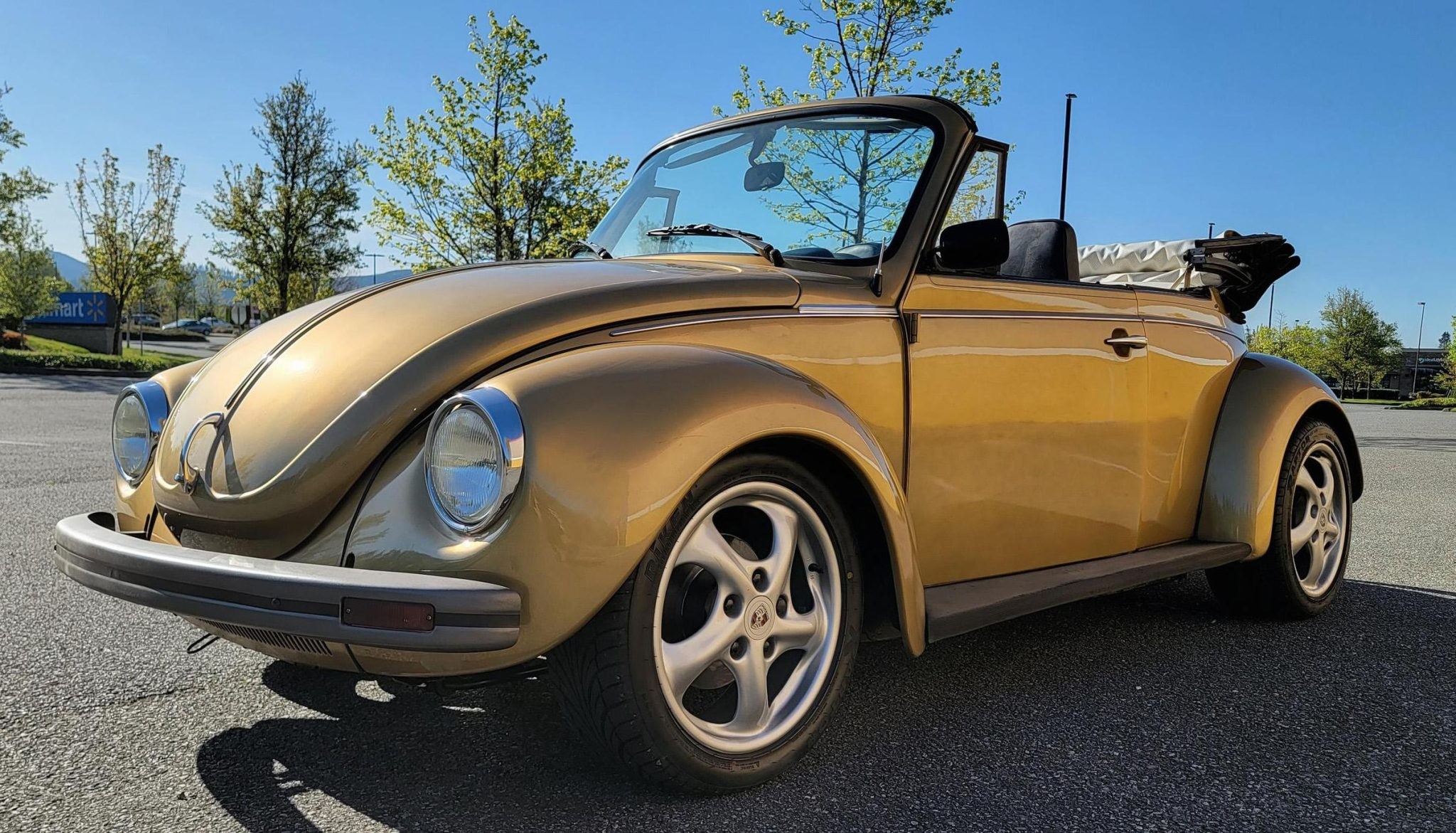What started as a murderous dictator’s dream of transporting the masses became a symbol of peace and love all over the globe. So, give me a second to put on my Hawaiian shirt, grab my Ukulele, and talk about the Volkswagen Beetle.
I’ve said before, and I still believe that the Beetle is overrated. Yes, it is essential to our culture in everything from movies, music, way of life and, of course, to our world of petrol. But that doesn’t mean it isn’t overrated. With almost 22,000,000 built from 1938 to 2003, I don’t get why they are so expensive. They are rare, and I don’t believe the culture is enough to justify the massive prices.
Anyway, I digress. Let’s get to the car, as we have an amazing one here today. But, first, a short history lesson. The Volkswagen Beetle story begins with that German dictator whose name I won’t mention. In 1934, when he became chancellor, he ordered a cheap state car to transport the masses. To bring the Volkswagen concept to life, the government brought in race car engineer Ferdinand Porsche – maybe, just maybe, you’ve heard of him.
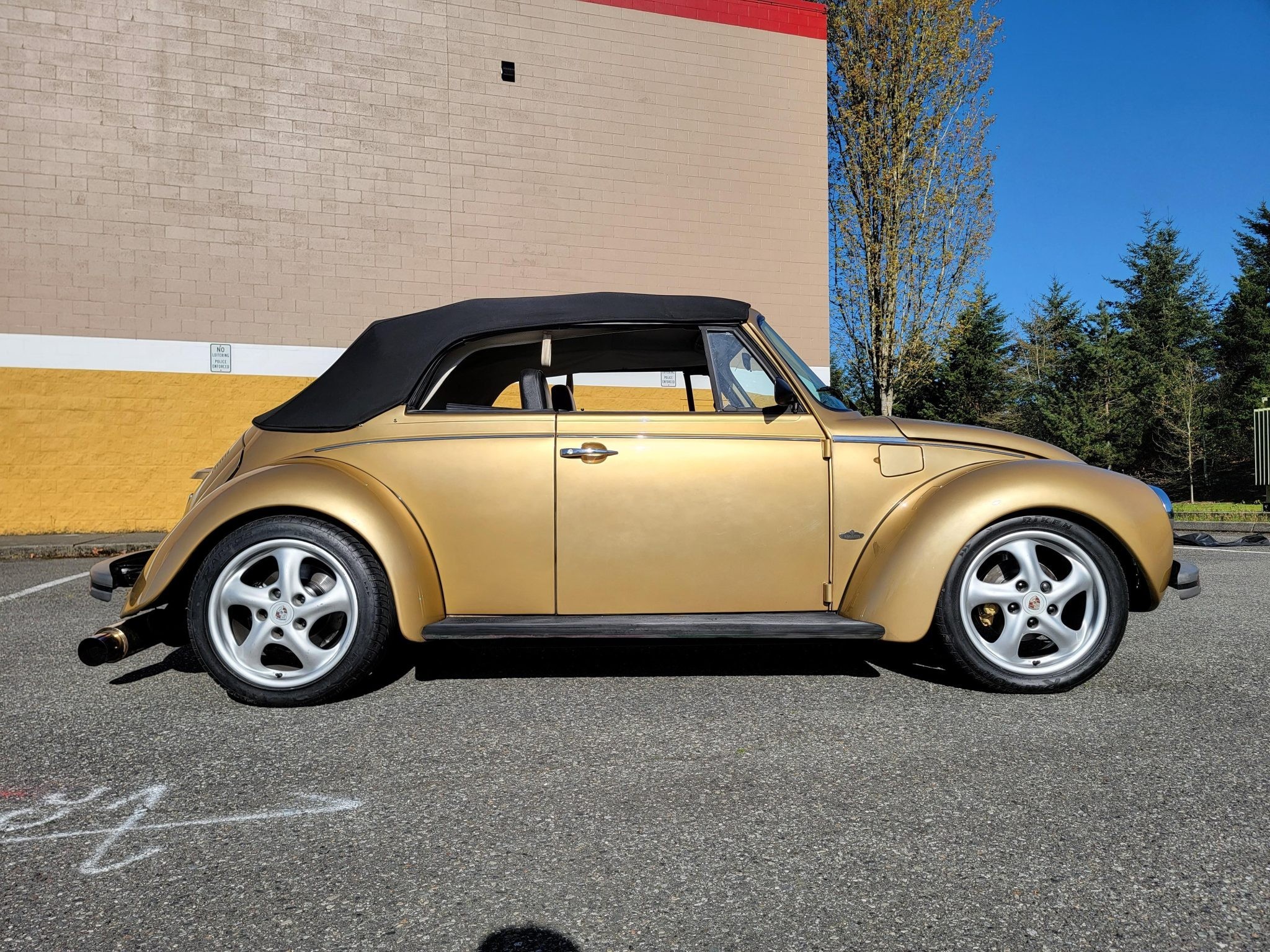
Mister Porsche was tasked with building a small car with enough room to fit a whole family, easy to fix, and reliable. The final product has a sleek design and roomy interior but limited room for luggage in the frunk, as the engine was shoved in the back – you know, the Porsche way. But there was a problem. Ferdinand Porsche might have taken inspiration from somewhere else.
That somewhere else is Czechoslovakia, specifically the company Tatra. They saw the VW creation and thought, “Hmm, that looks a little familiar.” So they sued Volkswagen. But what do you do when you’re a dictator, and someone sues you? You invade the country and take over the factory, as any sane person would.
The first batch of Beetles rolled out of the brand-new factory in 1938, and they were all given to high-ranking military personnel. But, only 210 of them managed to see tarmac as it was 1938, there was that big war, and every factory in Germany seized whatever it was producing and switched to military equipment production. In 1945, after the war, British troops discovered what was left of the factory, and an auction was held for it: prints and whatever parts remained – but nobody wanted it.
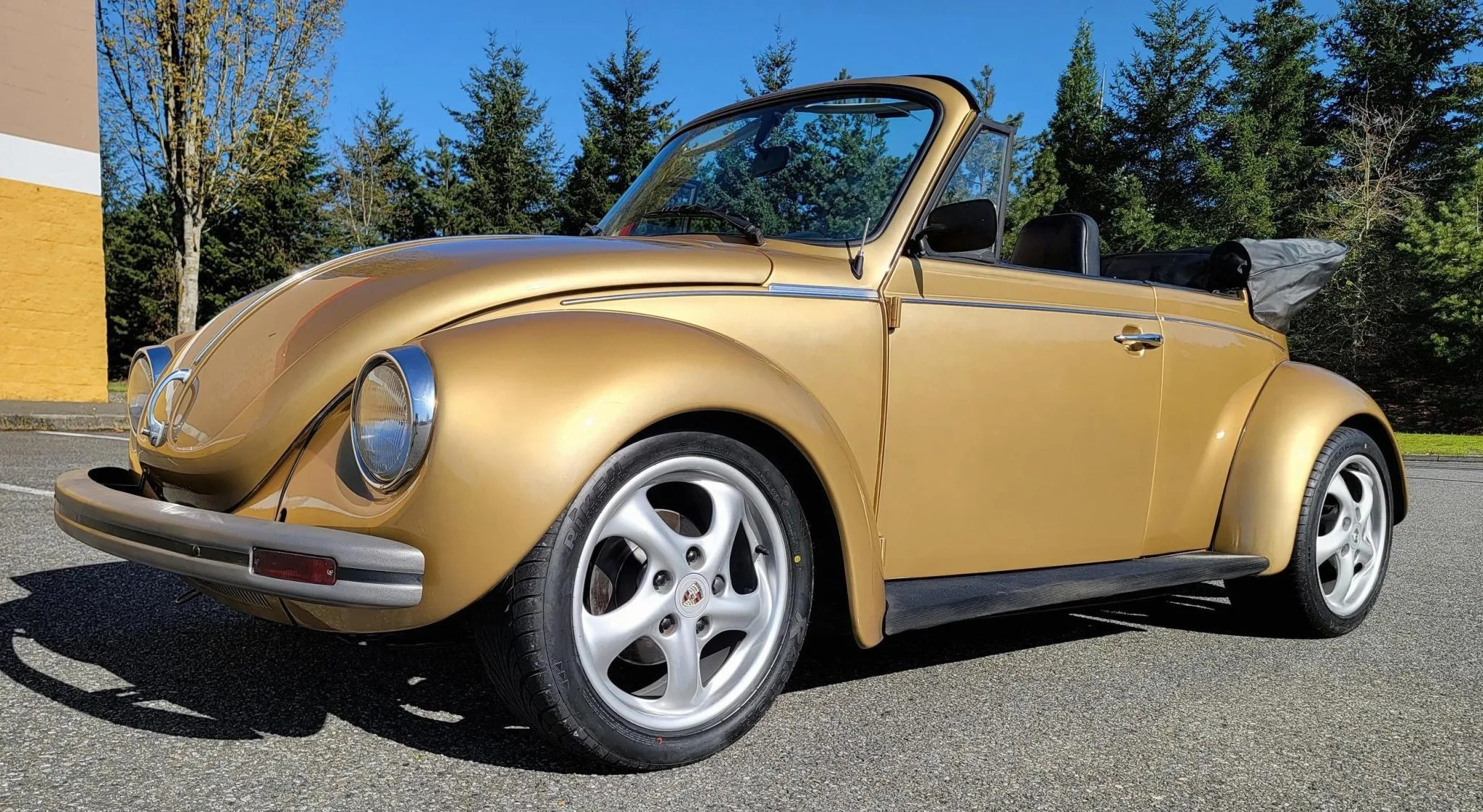
Since it remained unsold, it was rebuilt in 1946 after the city was renamed Wolfsburg, and production roared to life once again in a symphony of flat-fours. But, during that time, Europe was still recovering from WW2, so if you wanted a market with money and good roads, you had to go over the pond to the States.
At first, no dealership in the US wanted to take on the little thing. In 1950 though, some of them did, and the Beetle, surprisingly, was a huge success. I say surprisingly because it was small compared to American cars, and with only 24 hp (24.3 ps) under the hood, it wasn’t necessarily a head-turner. But, it was economical, cheap, and reliable. By 1955, only eight short years after starting production, Volkswagen had sold 1,000,000 Beetles.
What followed was a flurry of surfers, hippies, and fun-loving people absolutely flocking around the Beetle for decades, and by 1972, it became the best-selling car in the world. During that same time, Volkswagen evolved the Beetle a little, and among that evolution, we also got the Super Beetle variant – and today, we have a really cool one from 1972 to geek over.
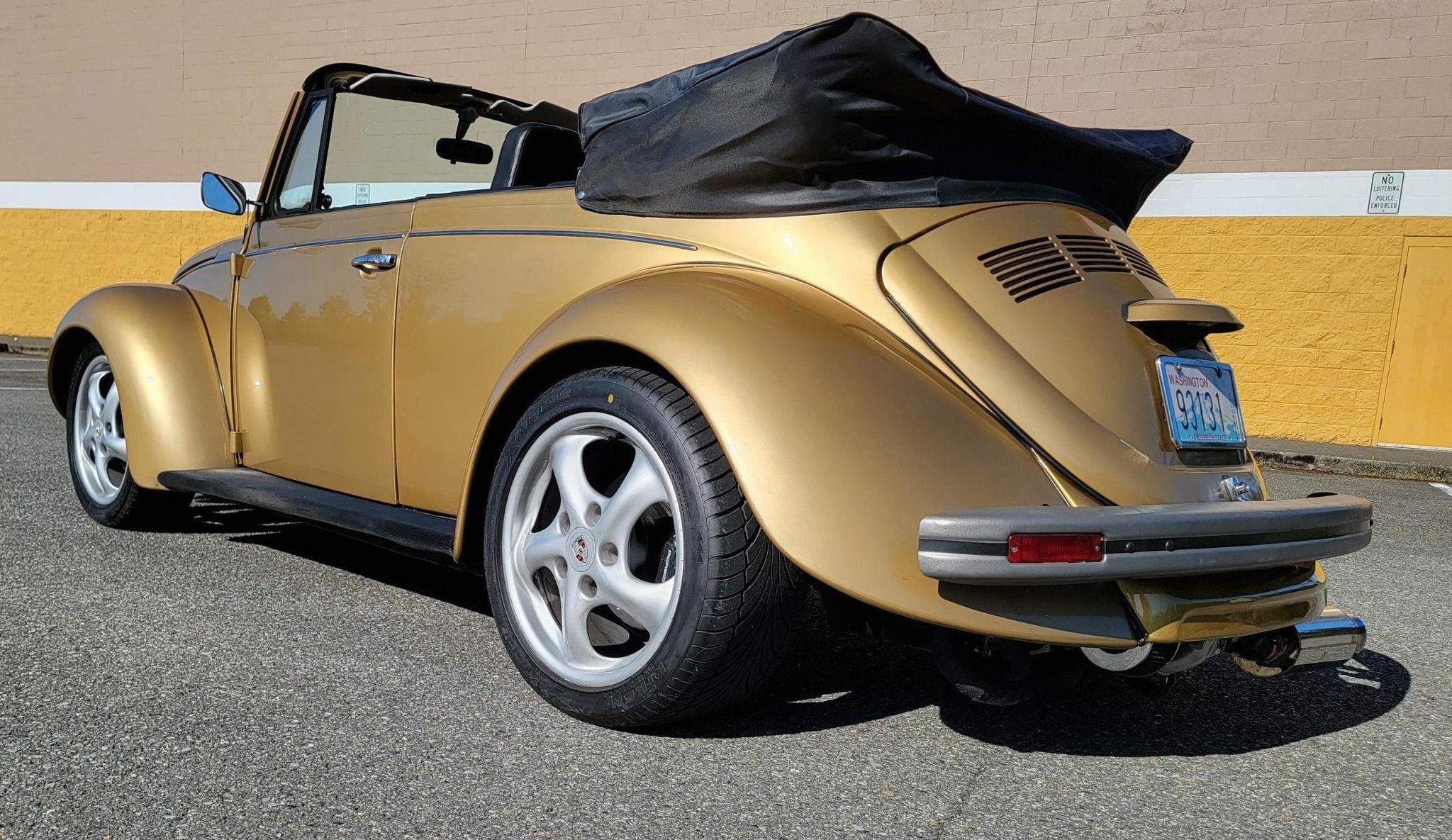
But first, let’s see what the Super Beetle brought to the table over the normal one. The Super Bug is bigger and more comfortable, using a MacPherson strut front assembly instead of the standard torsion bar. It also came only in convertible form, which was only an option for the regular Bug. At first glance, you might find it difficult to tell the two apart, but when you see this one we have here today, it will most certainly stand out over any other Bug.
This particular one was one of the 300 ‘Sun Bugs’ produced for the North American market, and nowadays, it’s anything but standard. The current owner completely stripped it, replaced the floor pans and fenders with wider ones made from fiberglass. After this process, the Bug was repainted in gold. Under those fenders mentioned earlier are 17-inch five-spoke Porsche alloys.
Behind those wheels, you’ll find even more modifications. Adjustable coilovers, camber plates, Porsche 944 trailing arms, and 930 CV joints give this cute Bug a mean stance – it looks like an angry poodle. Stopping power is also substantial compared to the stock Bug, courtesy of Porsche rear disc brakes, which is good, but we’ll get to that in a second.
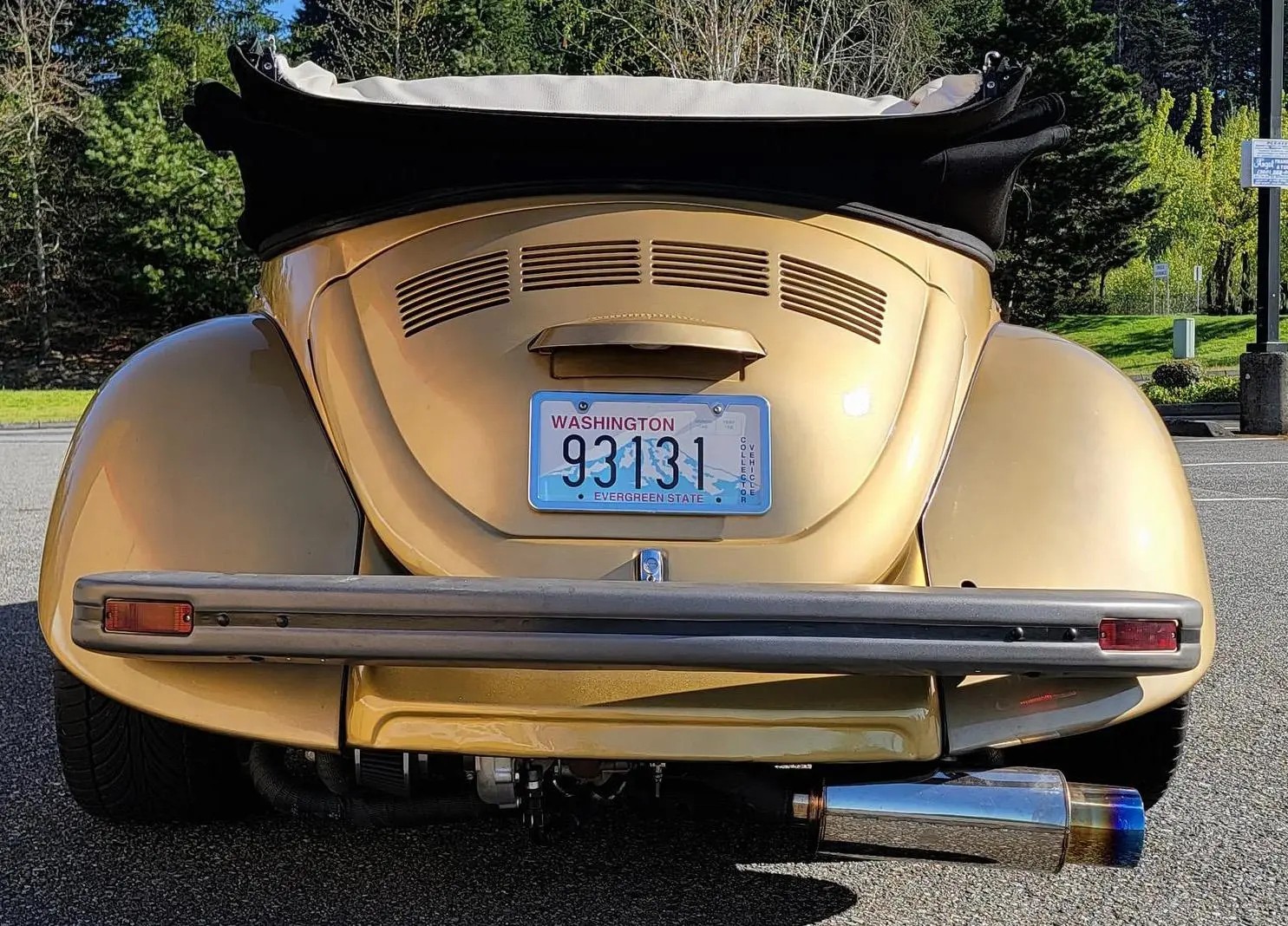
The main feature of the interior is the Porsche 944 front seats. The rear bench was also reupholstered in black to match. The Momo steering wheel fronts a 100 mph (160 kph) speedometer, and that’s it. The other gauges were added later and include a tachometer, oil pressure, and a boost gauge – so it’s time we find out what lies under the hood of this thing.
The engine is still a Volkswagen flat-four, but it’s one from a 1972 Volkswagen Bus, and it measures 1.8 liters (110 ci) in displacement and is fuel injected. In standard form, that engine makes a little over 70 hp (71 ps), which might seem more than enough for the puny Beetle – but no. Shoved in the small engine compartment, you’ll also find a turbocharger – a little crazy in an old car and small package. The power output is unknown, but I’ve seen other builds pushing 150 hp (152 ps) from similar setups. All that power goes to the rear wheels via a four-speed manual transaxle.
This cute reaper might upset fanboys of the model, but it’s Super-cool. If you want a fast Bug in the top-down package, this one is up at auction in Monroe, Washington. It currently sits at 5,250 dollars and has 31,000 miles (50,000 kilometers) on the odometer, but with so many significant parts changed, who knows what the actual number is? It also comes with a VW Certificate of Authenticity, a clean Washington state title, and a will to cruise next to the beach.
